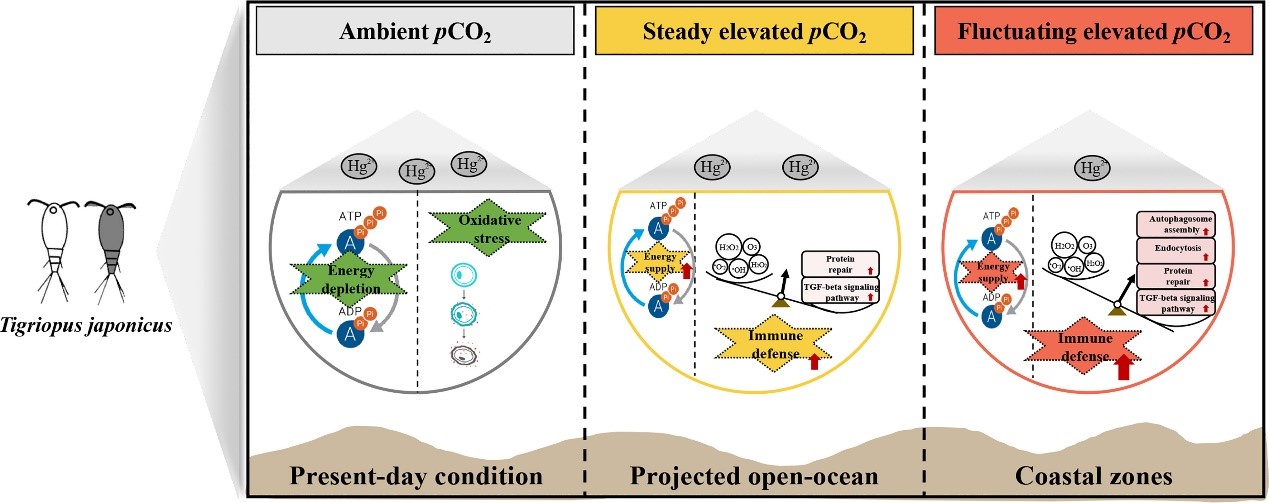Cheng L.; Bai Z.; Wei H.; Chen Y. and Wang M. 2023. Marine Pollution Bulletin 192.
Coastal waters have experienced fluctuations in partial pressure of carbon dioxide (pCO2) and mercury (Hg) pollution, yet little is known concerning how natural pCO2 fluctuations affect Hg biotoxicity. Here, a marine copepod Tigriopus japonicus was interactively exposed to different seawater pCO2 (ambient 400, steady elevated 1000, and fluctuating elevated 1000 ± 600 μatm) scenarios and Hg (control, 2 μg/L) treatments for 7 d. The results showed that elevated pCO2 decreased Hg bioaccumulation, and it was even more under fluctuating elevated pCO2 condition. We found energy depletion and oxidative stress under Hg-treated copepods, while combined exposure initiated compensatory response to alleviate Hg toxicity. Intriguingly, fluctuating acidification presented more immune defense related genes/processes in Hg-treated copepods when compared to steady acidification, probably linking with the greater decrease in Hg bioaccumulation. Collectively, understanding how fluctuating acidification interacts with Hg contaminant will become more crucial in predicting their risks to coastal biota and ecosystems.

Schematic illustration of the key molecular processes occurring in Hg-treated Tigriopus japonicus under different pCO2 conditions (ambient pCO2, steady elevated pCO2, and fluctuating elevated pCO2).

